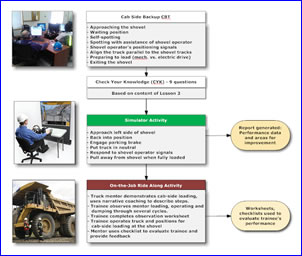 During the last year, I have served as the marketing manager for a small safety training products company. As the firm has developed new products, I have needed to develop concepts for brochures, web pages, direct mailers, web banner ads and more.
During the last year, I have served as the marketing manager for a small safety training products company. As the firm has developed new products, I have needed to develop concepts for brochures, web pages, direct mailers, web banner ads and more.
The company has a very talented artist who can translate my ideas into polished, professional looking finished products. But I needed a way to communicate my ideas clearly to him. And I was looking for something a bit better than a simple pencil sketch.
My tool of choice for prototyping my marketing and promotional ideas during the last year has been SmartDraw. Although it has been designed to help users to create many types of business diagrams, I have found it to be equally adept at creating mockups of marketing materials. I simply open a new flow charting diagram, which gives me access to the shapes and tools I need.
As you can see from the examples in this blog post, it’s very easy to import images into the workspace, and resize them as needed. I haven’t found a way to crop them to remove extraneous elements, however, so I do that in Photoshop and them import the trimmed images.
Examples of what I’ve created in SmartDraw
Frames of an animated GIF ad: Each frame is represented by a separate rectangle, so the artist can see the wording I’d like to appear, in order, from top to bottom (shown at the top of this blog post).
 A direct mailer for a new product: Note the wording and arrow to the left of the mailer design (red highlight in the image at right), which I used to ask the artist to make some modifications to this image. In this case, I used SmartDraw not only to “show,” but also to “tell.”
A direct mailer for a new product: Note the wording and arrow to the left of the mailer design (red highlight in the image at right), which I used to ask the artist to make some modifications to this image. In this case, I used SmartDraw not only to “show,” but also to “tell.”
A wireframe layout for a web page redesign (not pictured here).
Why does SmartDraw work so well for this type of work? Because most marketing materials are based upon a grid type of layout. In other words, brochures, web pages, flyers and other marketing materials are designed using a combination of square and rectangular regions – which are very easy to approximate in this powerful business diagramming program.
Benefits
Here are some of the benefits I’ve discovered by using this approach:
- The artist has a clearer idea of what I want to see created.
- I’m able to bounce a rough prototype, including text headlines and major copy points, off of my boss – without tying up even an hour of the artist’s time.
- Once I have my boss’ feedback, I open up SmartDraw, make the necessary modifications to the mockup and then give it to the artist for further development and refinement. I encourage him to use his creative license to improve upon what I have created.
- This process eliminates a lot of back and forth iterations between me, my boss and the artist. What I give to the artist is much closer to the wording and design of the final piece – which enables the artist to use his time working on higher value added activities, rather than making repeated tweaks to the design and wording of the piece.
Other marketing applications of SmartDraw
I  also use SmartDraw to develop illustrations that explain how a product works. In this case, I used the program to depict a high-level overview of a complex training curriculum. I was asked by my employer’s salespeople to create a new diagram (pictured at right) that drilled down into a single lesson, showing how all of its elements fit together.
also use SmartDraw to develop illustrations that explain how a product works. In this case, I used the program to depict a high-level overview of a complex training curriculum. I was asked by my employer’s salespeople to create a new diagram (pictured at right) that drilled down into a single lesson, showing how all of its elements fit together.
In summary, I have found SmartDraw to be an essential tool as part of my job as the marketing manager for this safety training products firm.

Leave a Reply